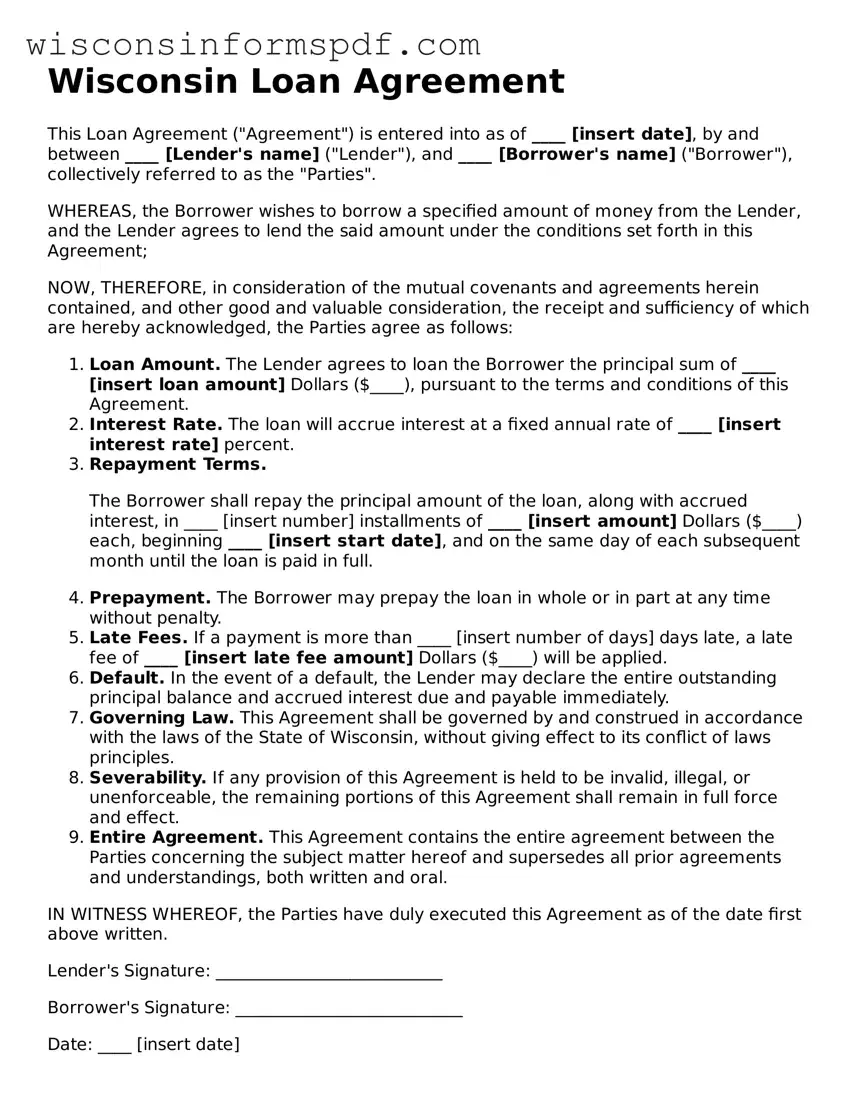Wisconsin Loan Agreement
This Loan Agreement ("Agreement") is entered into as of ____ [insert date], by and between ____ [Lender's name] ("Lender"), and ____ [Borrower's name] ("Borrower"), collectively referred to as the "Parties".
WHEREAS, the Borrower wishes to borrow a specified amount of money from the Lender, and the Lender agrees to lend the said amount under the conditions set forth in this Agreement;
NOW, THEREFORE, in consideration of the mutual covenants and agreements herein contained, and other good and valuable consideration, the receipt and sufficiency of which are hereby acknowledged, the Parties agree as follows:
- Loan Amount. The Lender agrees to loan the Borrower the principal sum of ____ [insert loan amount] Dollars ($____), pursuant to the terms and conditions of this Agreement.
- Interest Rate. The loan will accrue interest at a fixed annual rate of ____ [insert interest rate] percent.
- Repayment Terms.
The Borrower shall repay the principal amount of the loan, along with accrued interest, in ____ [insert number] installments of ____ [insert amount] Dollars ($____) each, beginning ____ [insert start date], and on the same day of each subsequent month until the loan is paid in full.
- Prepayment. The Borrower may prepay the loan in whole or in part at any time without penalty.
- Late Fees. If a payment is more than ____ [insert number of days] days late, a late fee of ____ [insert late fee amount] Dollars ($____) will be applied.
- Default. In the event of a default, the Lender may declare the entire outstanding principal balance and accrued interest due and payable immediately.
- Governing Law. This Agreement shall be governed by and construed in accordance with the laws of the State of Wisconsin, without giving effect to its conflict of laws principles.
- Severability. If any provision of this Agreement is held to be invalid, illegal, or unenforceable, the remaining portions of this Agreement shall remain in full force and effect.
- Entire Agreement. This Agreement contains the entire agreement between the Parties concerning the subject matter hereof and supersedes all prior agreements and understandings, both written and oral.
IN WITNESS WHEREOF, the Parties have duly executed this Agreement as of the date first above written.
Lender's Signature: ___________________________
Borrower's Signature: ___________________________
Date: ____ [insert date]
